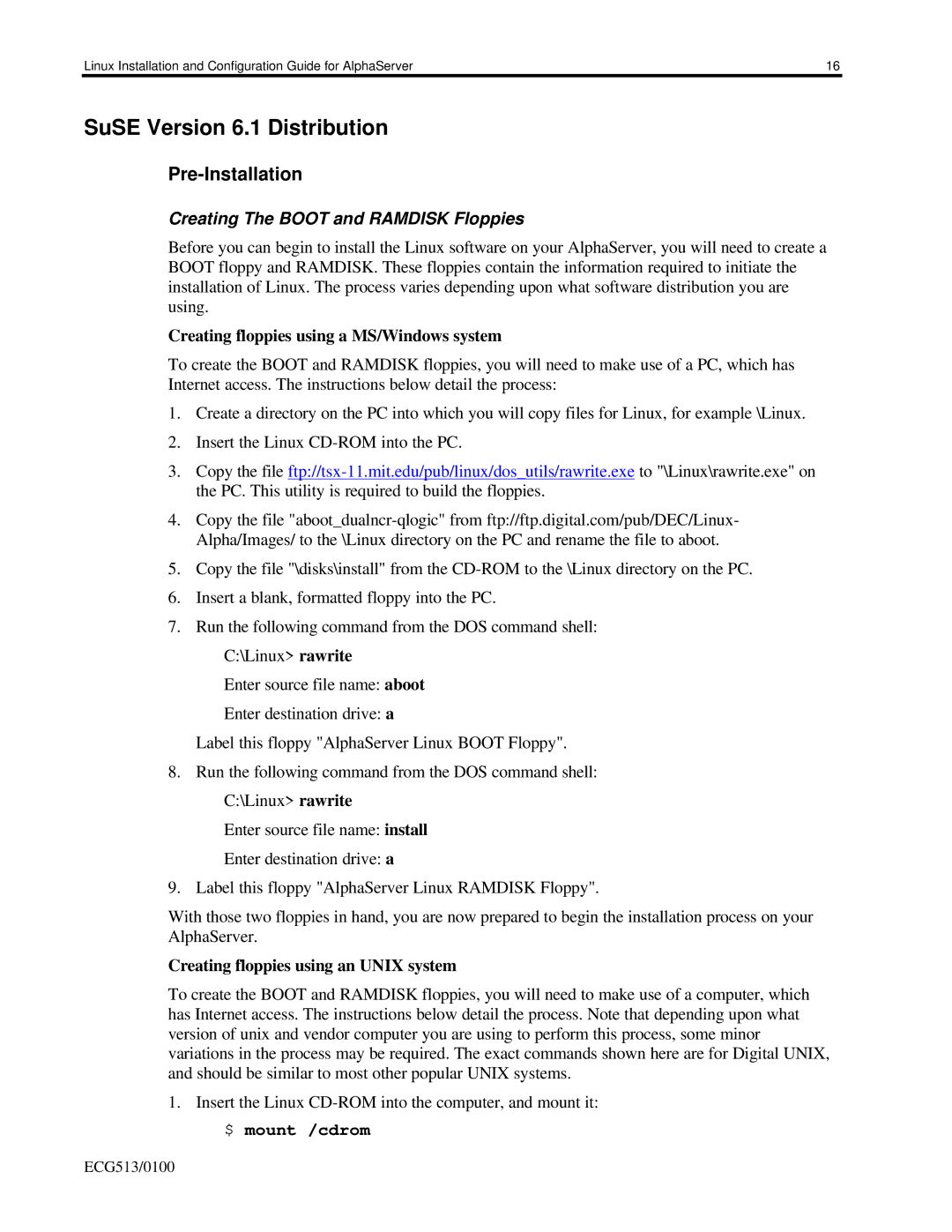Linux Installation and Configuration Guide for AlphaServer | 16 |
SuSE Version 6.1 Distribution
Pre-Installation
Creating The BOOT and RAMDISK Floppies
Before you can begin to install the Linux software on your AlphaServer, you will need to create a BOOT floppy and RAMDISK. These floppies contain the information required to initiate the installation of Linux. The process varies depending upon what software distribution you are using.
Creating floppies using a MS/Windows system
To create the BOOT and RAMDISK floppies, you will need to make use of a PC, which has Internet access. The instructions below detail the process:
1.Create a directory on the PC into which you will copy files for Linux, for example \Linux.
2.Insert the Linux
3.Copy the file
4.Copy the file
5.Copy the file "\disks\install" from the
6.Insert a blank, formatted floppy into the PC.
7.Run the following command from the DOS command shell:
C:\Linux> rawrite
Enter source file name: aboot
Enter destination drive: a
Label this floppy "AlphaServer Linux BOOT Floppy".
8.Run the following command from the DOS command shell: C:\Linux> rawrite
Enter source file name: install
Enter destination drive: a
9.Label this floppy "AlphaServer Linux RAMDISK Floppy".
With those two floppies in hand, you are now prepared to begin the installation process on your AlphaServer.
Creating floppies using an UNIX system
To create the BOOT and RAMDISK floppies, you will need to make use of a computer, which has Internet access. The instructions below detail the process. Note that depending upon what version of unix and vendor computer you are using to perform this process, some minor variations in the process may be required. The exact commands shown here are for Digital UNIX, and should be similar to most other popular UNIX systems.
1.Insert the Linux
ECG513/0100
